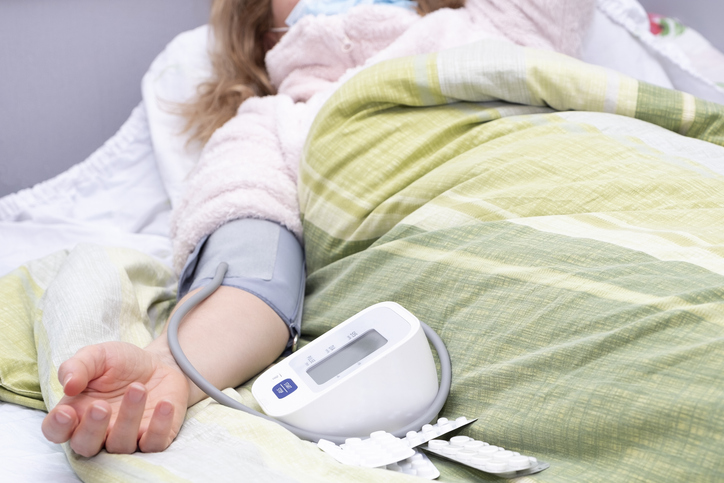By Lucy Piper, medwireNews Reporter
medwireNews: People with supine hypertension have an increased risk of cardiovascular disease (CVD) events, irrespective of whether they also have seated hypertension and are taking antihypertensive medication, shows research published in JAMA Cardiology.
Moreover, the risk of CVD outcomes or death associated with supine hypertension was significantly greater than that associated with seated hypertension.
“These findings suggest that measuring supine BP [blood pressure] may be useful for identifying elevated BP and latent CVD risk”, say Stephen Juraschek (Harvard Medical School, Boston, Massachusetts, USA) and colleagues.
They used data from the Atherosclerosis Risk in Communities study for 11,369 individuals without known CVD. Of these, 55.7% were women, the mean age was 54 years, and 74.9% were White and 25.1% were Black.
Hypertension (systolic blood pressure [SBP] ≥130 mmHg; diastolic BP [DBP] ≥80 mmHg) was detected in 9.8% of patients only when seated, measured as the mean of the last two of three BP measurements taken 25 seconds apart, and in 10.3% only when supine, determined from five BP measurements taken using an automatic cuff every 20–30 seconds for 2 minutes after a 20-minute rest.
Supine hypertension was present in 16.4% of participants without seated hypertension, 73.5% of those with seated hypertension, and in 54.2% and 31.9% of those taking and not taking antihypertensives, respectively.
The researchers report that over a median follow-up of 25.7– 28.3 years, supine hypertension was associated with a significant increase in the risk for incident and fatal coronary heart disease (CHD), incident heart failure, incident stroke and all-cause mortality, compared with not having supine hypertension, with hazard ratios of 1.60, 2.18, 1,83, 1,86 and 1.43, respectively.
Moreover, “[p]articipants with supine hypertension alone had risk associations similar to those of participants with hypertension in both positions and significantly greater than those of participants with seated hypertension alone with the exception of fatal CHD”, the investigators point out.
Specifically, patients with supine hypertension had a significant 53% increase in incident CHD, a 78% increase in fatal CHD, a 51% increase in incident heart failure, a 62% increase in incident stroke, and a 34% increase in all-cause mortality, compared with people without hypertension. The risks for these outcomes among those with seated and supine hypertension ranged from a significant 43% for all-cause mortality to 138% for fatal CHD.
By contrast, seated hypertension was only significantly associated with fatal CHD (hazard ratio [HR]=1.41) and all-cause mortality (HR=1.11) compared with no hypertension. And patients with seated hypertension alone had significantly lower CVD risks than those with supine hypertension by a significant 28% for incidence CHD and incident heart failure, 34% for incident stroke and 17% for all-cause mortality. The only exception was the risk for fatal CHD, which did not differ significantly between the two groups.
Juraschek et al note that the “[r]esults did not differ meaningfully across strata of hypertension medication use or when follow-up was truncated at 10 years.”
They comment that, while seated BP is “the standard for hypertension management with respect to CVD risk”, the current findings suggest “supine hypertension warrants greater attention,” particularly “given the simplicity of performing a supine BP in the clinic and the opportunity to detect occult hypertension”.
The study authors also suggest the possibility that supine hypertension may be associated with nocturnal hypertension and could be “a much more accessible means of determining BP patterns at night given that ambulatory BP monitoring is a relatively challenging clinical assessment.”
They say that this proposed link requires further research and “a direct comparison of supine and nocturnal BPs would be an important development of this work.”
News stories are provided by medwireNews, which is an independent medical news service provided by Springer Healthcare Ltd. © 2025 Springer Healthcare Ltd, part of the Springer Nature Group
JAMA Cardiol 2025; 104: e210268

